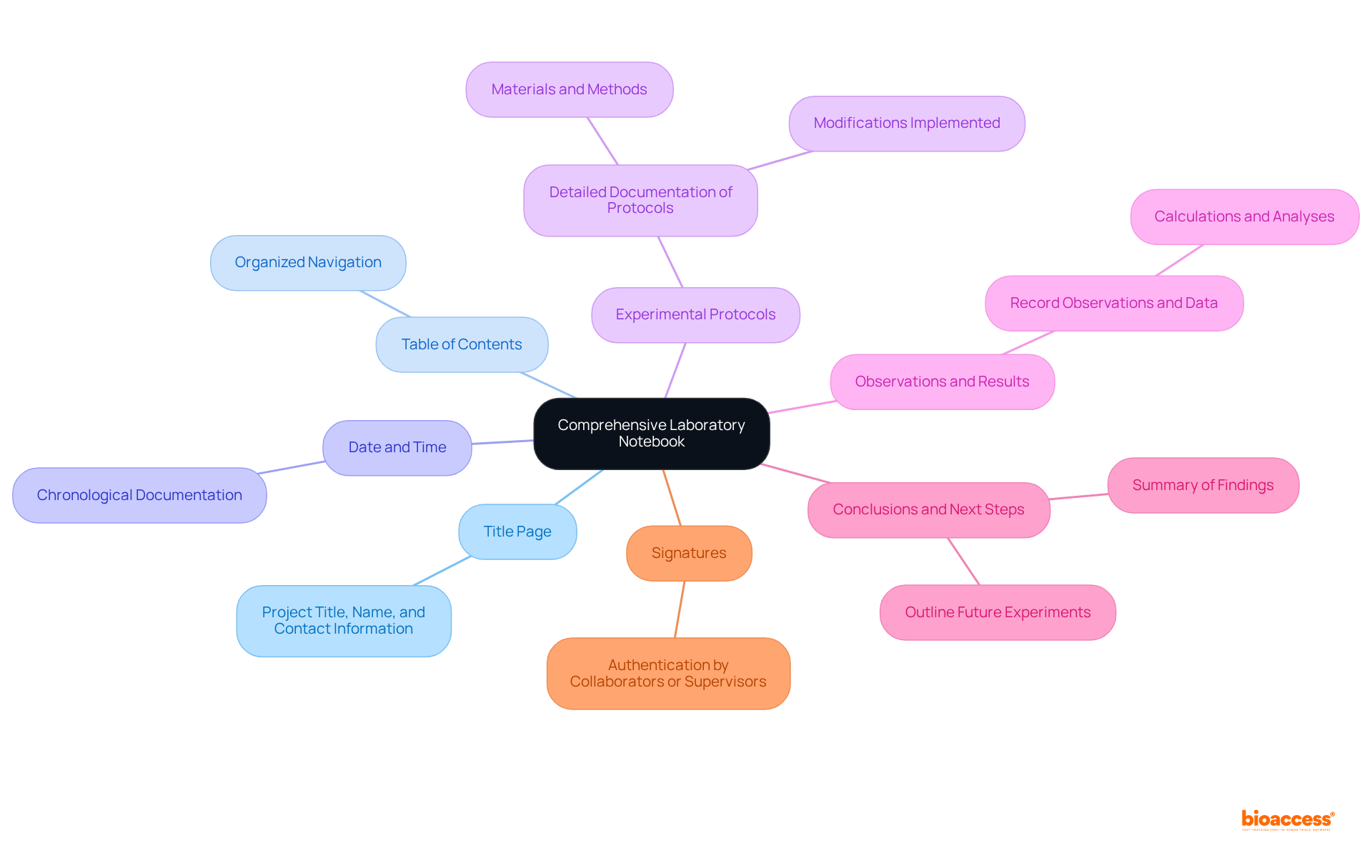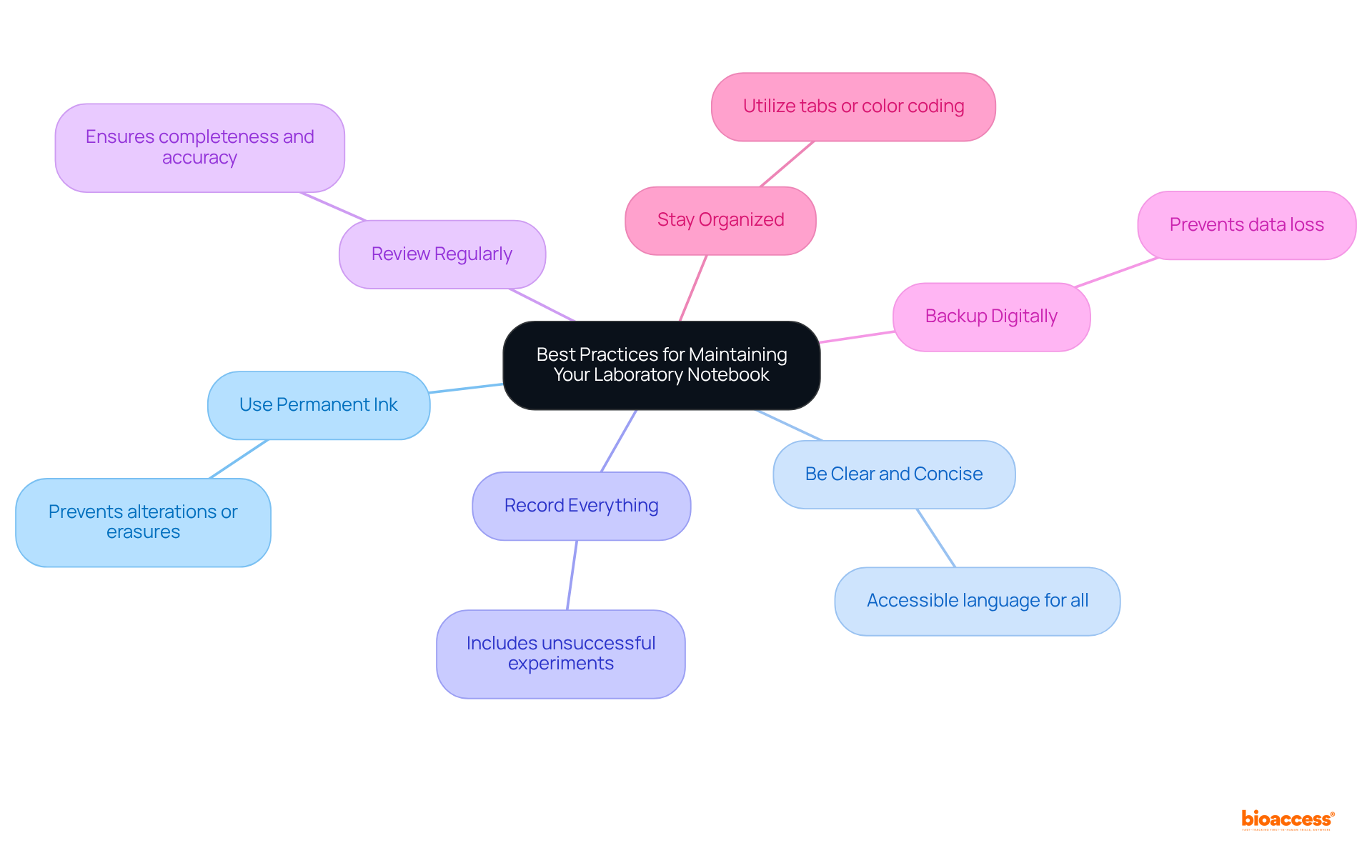


The article underscores the critical importance of mastering your laboratory notebook as an essential tool for effective research management. It highlights the notebook's pivotal roles in ensuring data integrity, maintaining regulatory compliance, and safeguarding intellectual property. By detailing the essential components, best practices for maintenance, and strategies to troubleshoot common challenges, it demonstrates how a well-organized notebook can significantly enhance research efficiency and bolster credibility.
A laboratory notebook transcends being merely a collection of notes; it stands as a cornerstone of scientific integrity and research management. By meticulously documenting experiments, researchers not only ensure data accuracy and compliance with regulations but also safeguard their intellectual property and foster collaboration.
Nevertheless, maintaining an effective laboratory notebook presents challenges, ranging from inconsistent entries to the risk of lost data.
How can researchers master the art of notebook management to maximize these benefits and navigate these obstacles?
A laboratory notebook is not merely a compilation of notes; it serves as a legal document that provides a comprehensive record of your research endeavors. This essential tool fulfills several critical purposes:
By recognizing these elements, researchers can appreciate the significance of investing time and effort into maintaining their research records effectively.

A comprehensive laboratory notebook must encompass several essential components:
Incorporating these components enables researchers to ensure their records are both comprehensive and compliant with industry standards.

To maintain your laboratory notebook effectively, adhering to best practices is essential to ensure reliability and clarity in your research documentation.
By implementing these practices, researchers can significantly improve the dependability and functionality of their laboratory notebook, ultimately leading to more robust and credible scientific outcomes.

Researchers often face significant challenges when managing their laboratory notebooks, which are essential for maintaining accurate records in clinical research. Addressing these common issues proactively can enhance the integrity and effectiveness of documentation.
By addressing these challenges head-on, researchers can not only enhance their overall research efficiency but also uphold the integrity of their laboratory notebooks.

Mastering the art of maintaining a laboratory notebook is essential for effective research management. This critical tool serves as a comprehensive record of experiments, ensuring data integrity, compliance with regulations, and protection of intellectual property. By prioritizing the upkeep of a laboratory notebook, researchers significantly enhance the credibility and reproducibility of their work.
The article outlines key components to include in a laboratory notebook, such as:
Best practices for maintaining these notebooks—like using permanent ink, recording all experiments, and staying organized—are emphasized to help researchers avoid common pitfalls. Addressing challenges such as inconsistent entries or lost notebooks reinforces the importance of a well-managed laboratory notebook.
Ultimately, the significance of a meticulously kept laboratory notebook cannot be overstated. It serves as a practical tool for researchers and a cornerstone of scientific integrity and collaboration. By adopting the strategies outlined in this guide, researchers are encouraged to take proactive steps in enhancing their documentation practices, ensuring their research is both reliable and impactful.
What is the purpose of a laboratory notebook?
A laboratory notebook serves as a comprehensive record of research endeavors, ensuring data integrity, regulatory compliance, intellectual property protection, and facilitating collaboration and communication among team members.
Why is data integrity important in a laboratory notebook?
Data integrity is crucial because a well-maintained notebook guarantees that all data is recorded accurately, which is vital for ensuring the reproducibility of research findings.
How does a laboratory notebook help with regulatory compliance?
Many regulatory organizations require adequate documentation of research activities, making a laboratory notebook an indispensable tool for meeting these compliance requirements.
In what way does a laboratory notebook protect intellectual property?
A detailed record in a laboratory notebook can serve as evidence of the development process, which is important for patent applications and protecting intellectual property.
How does a laboratory notebook facilitate collaboration and communication?
A clear record in the laboratory notebook enables team members to understand the progress and methodologies used in the research, thereby fostering better collaboration.